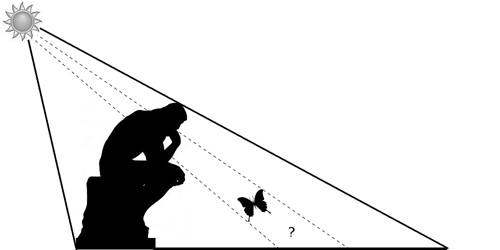Here are two principles about shadows:
- They don’t pass through opaque objects. Your shadow can fall on a wall, but not through it.
- Light must strike an object in order to cast a shadow. If you’re in the shade, you have no shadow.
Right? But now suppose the sun is behind you and you’re contemplating a butterfly:

The shadow under the butterfly is not cast by you (Principle 1), and it’s not cast by the butterfly (Principle 2). So what’s casting it?
“This is a genuine problem,” writes philosopher Robert Martin. “The rules for shadows aren’t inconsistent, but they are empirically inadequate — there are phenomena they do not fit.”
